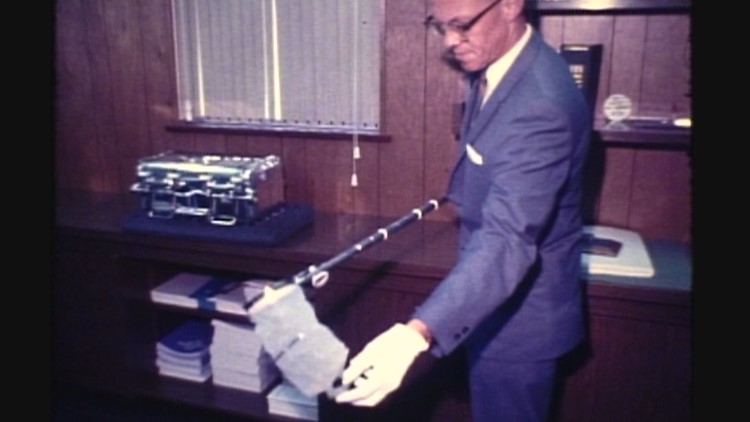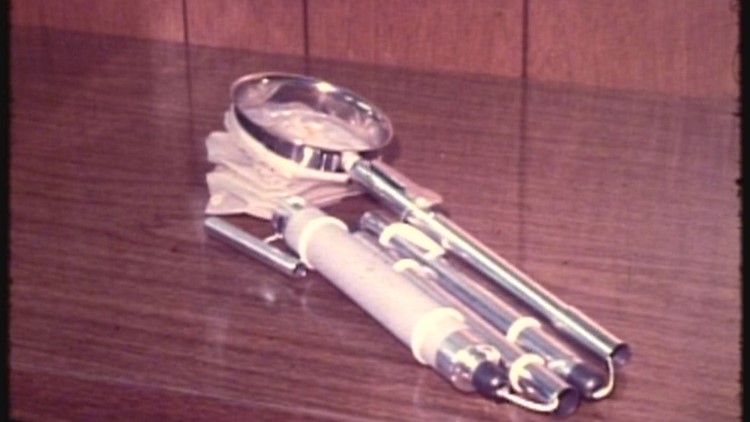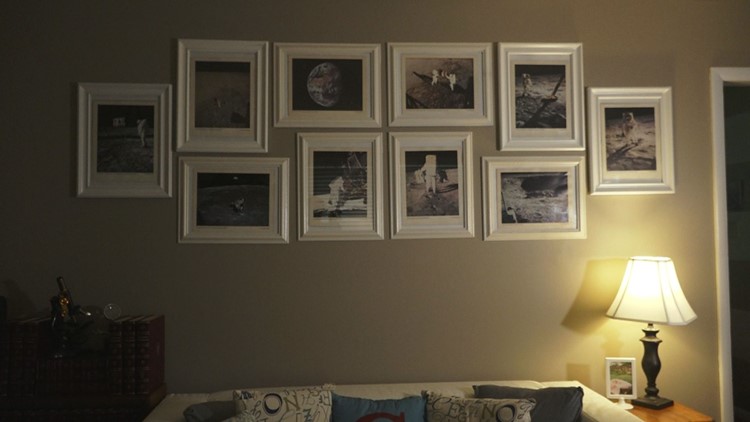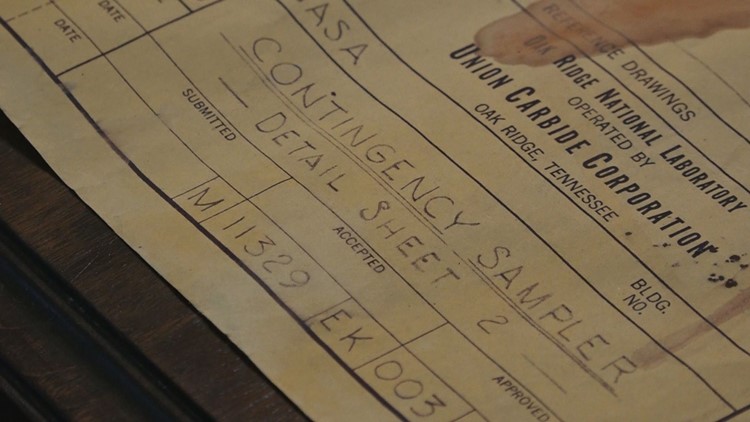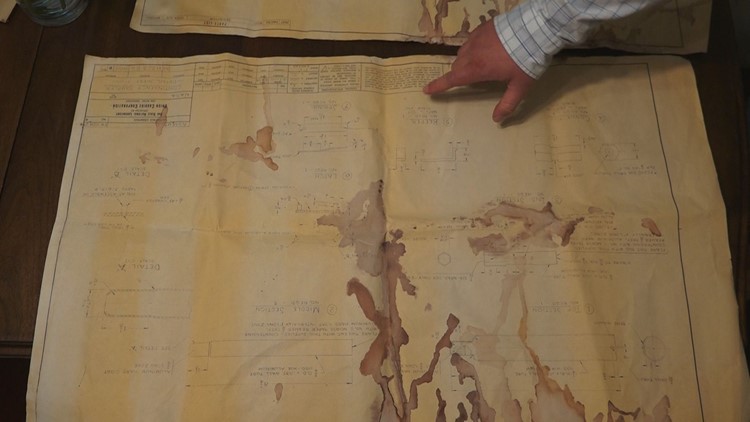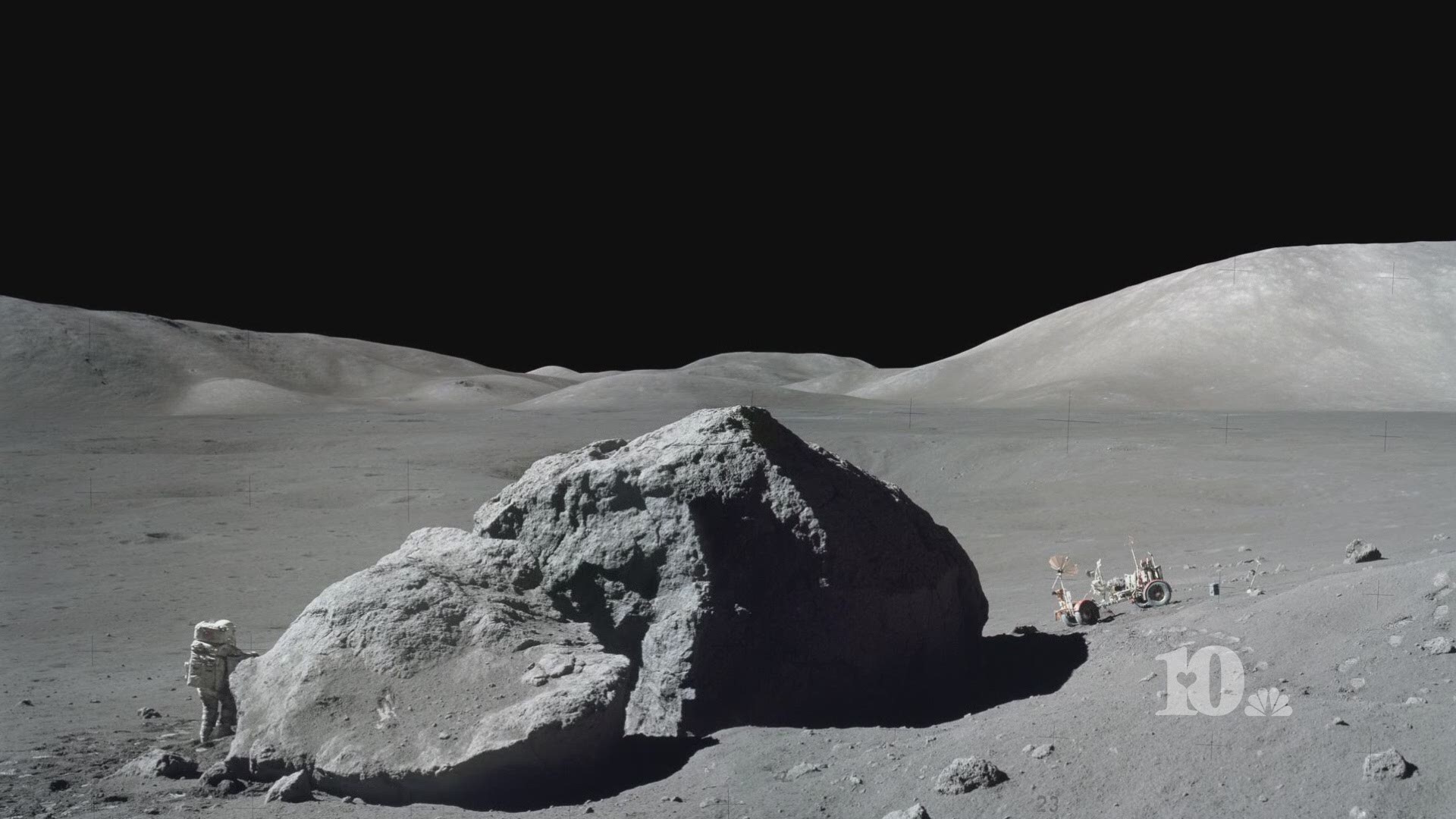KNOXVILLE, Tenn. — What some families might consider urban legend, is solidified in aging blueprints splayed across Kevin Gaddis’ kitchen table.
The coffee-stained documents, more than 50 years old, belonged to Gaddis’ grandfather, a Lenoir City draftsmen who worked for Union Carbide at Oak Ridge National Laboratory in the 60s.

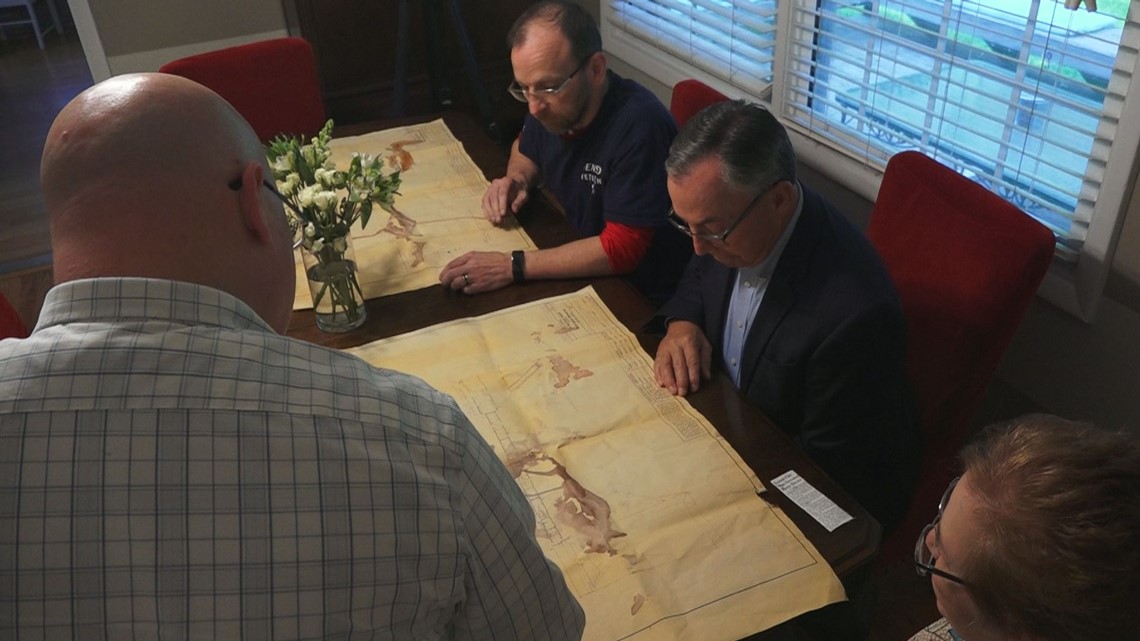
“I had always heard that he worked on the moon mission for Apollo 11 and knew he designed something but didn’t know what it was until I was older,” Gaddis said.
While working for ORNL, Glenn Ellis drew up the plans for the first tool astronaut Neil Armstrong would need once he landed safely on the moon. Officially, it was called the contingency soil sampler, but his son, Michael Ellis, said they all dubbed it ‘the moon scoop.’
The moon scoop was designed to fold up into Armstrong’s spacesuit, so he could quickly access it and collect a soil sample just in case the mission turned south and they were forced to leave.
“The way I remember him telling it, everything the astronauts had when they first exited the module had to be on their uniform. They couldn’t carry anything. Any tool they used had to be on their uniform,” Ellis recalled. “It had a telescopic handle that you could pull a string out of the astronauts pocket and it would become rigid. Then, it could be used to scoop up a sample of soil and put it back in the pouch.”
Years after Ellis passed away, his family still has the original blueprints, and moon landing photos that NASA sent as a ‘thank you’ hang on the wall of Gaddis’ house.

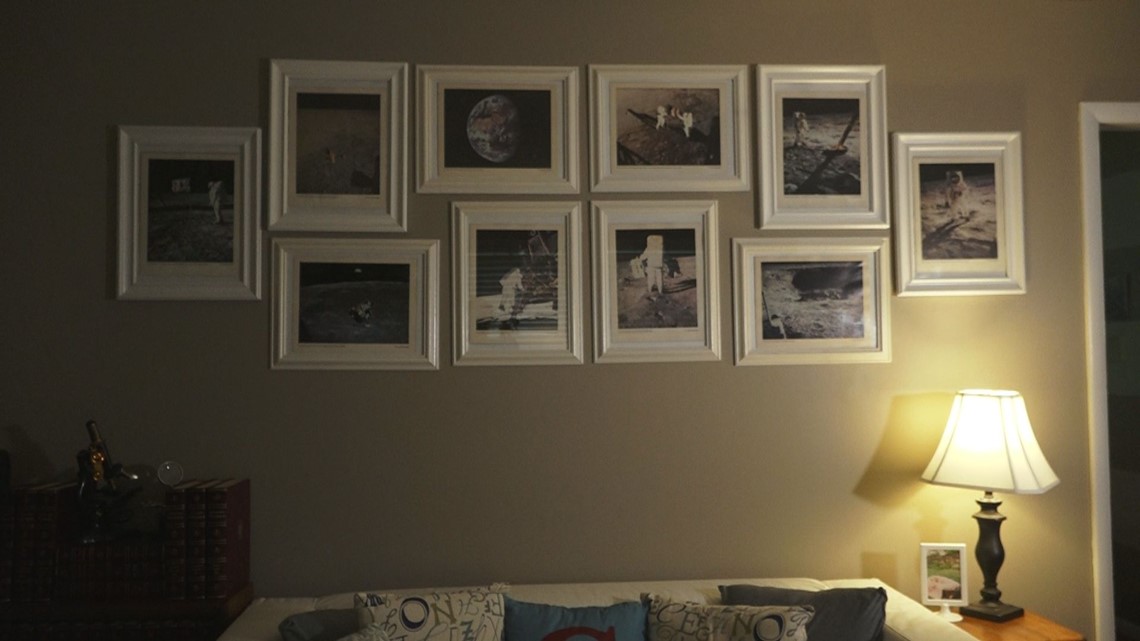
But, their favorite story of the tool their grandfather designed is one that was never supposed to happen.
Nearly two years after Armstrong first stepped foot on the moon, astronaut Alan Sheppard was doing the same for Apollo 14, but he had a surprise no one saw coming.
Sheppard used the contingency soil sampler to rig up the galaxy’s longest golf shot.
“He had some help from some other engineers and technicians, so he wouldn’t get detected,” described Billy Gaylon, another grandson. “When he got to the moon, he was able to attach the head of that six iron, drop two golf balls on the surface and hit both of them where he famously said, ‘miles and miles and miles.’”
The contingency soil sampler was used on almost every mission to the moon. Luckily, it never had to be the sole source of samples, but Ellis would tell you it left a lasting impact on his entire family.
Today, Gaddis is an Enriched Isotope Chemical Technician at ORNL, a career sparked by his love of space and science. Galyon is a draftsman just like his grandfather, and the entire family has an interest in space exploration.
“Dad was not an inventor. He was a draftsman. He got a job in Oak Ridge to design this thing that now TV stations are coming and wanting to talk about. So, imagine the impact on a family. We just knew him as our dad. And, we all, especially his grandchildren and great-grandchildren knew him to be a smart man even without all the degrees. Just look at at the pictures on the wall. Every grandchild has copies of those.”


